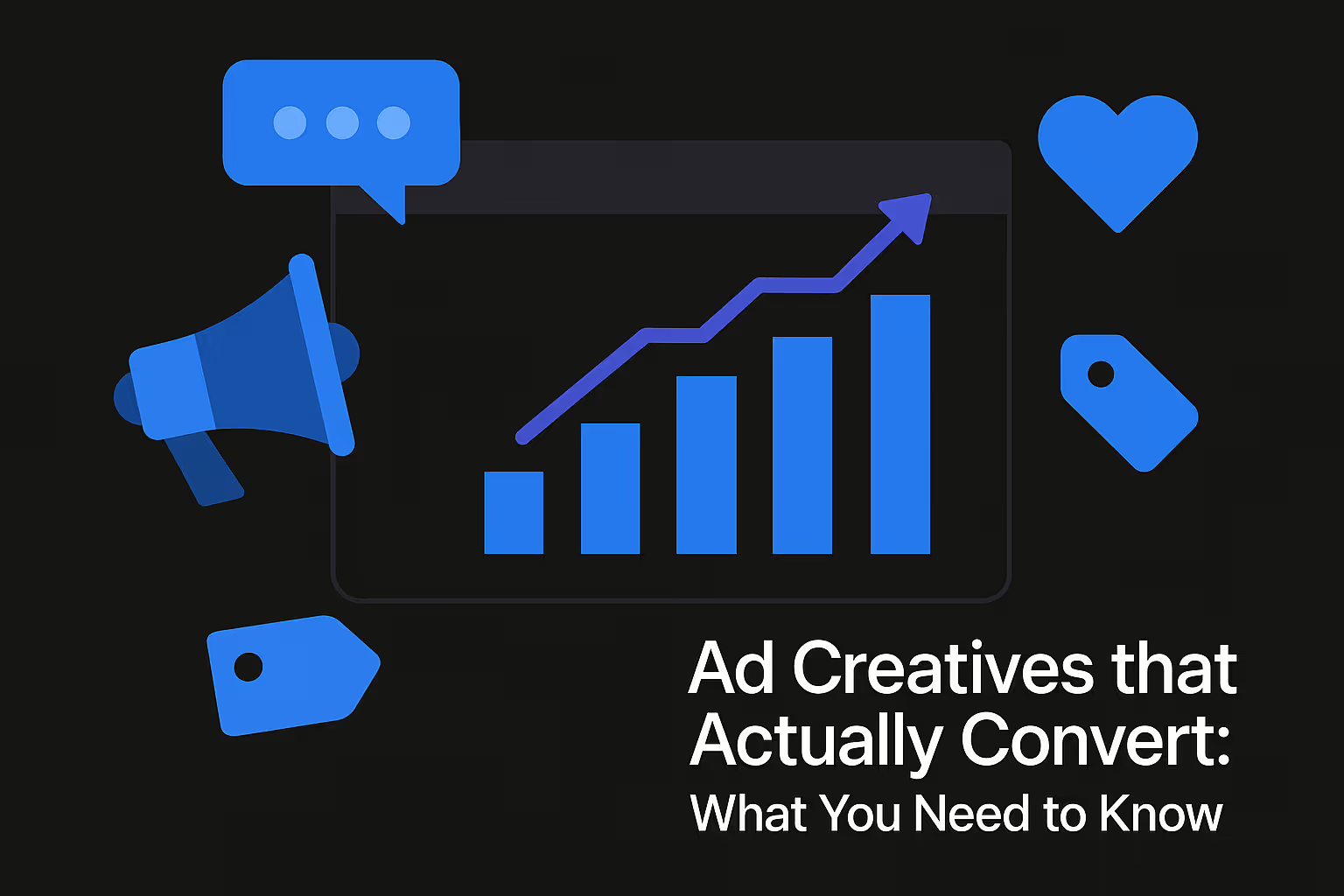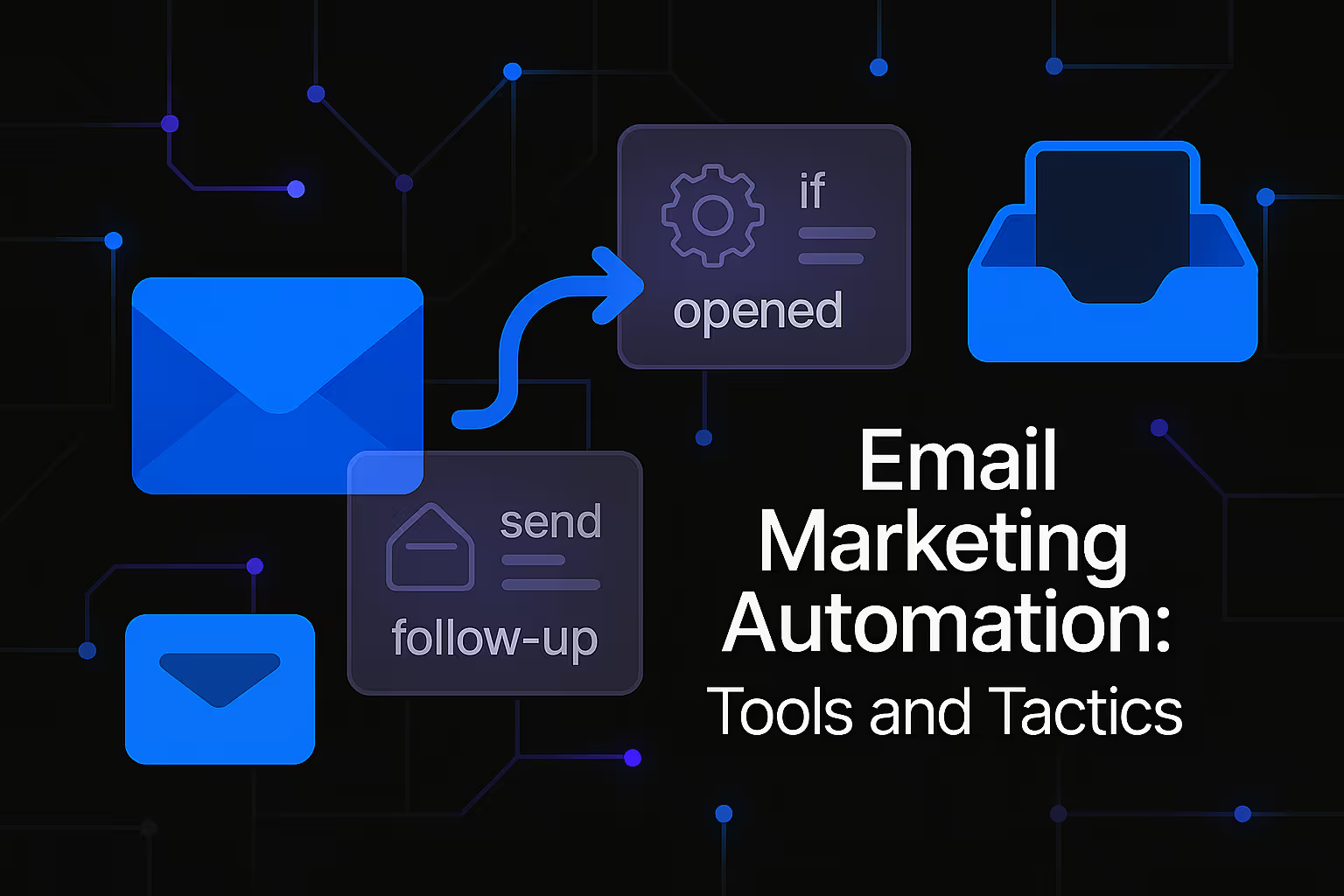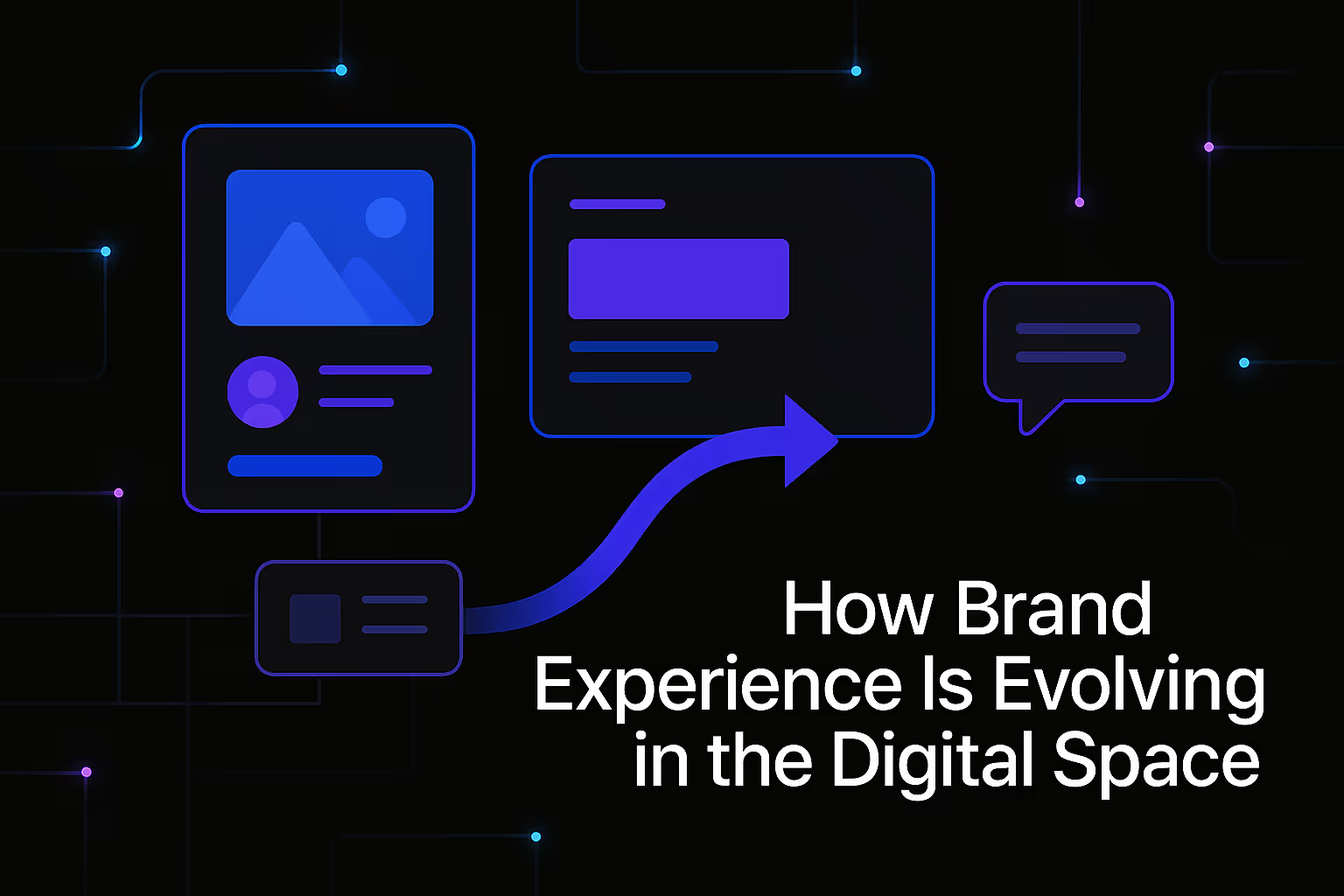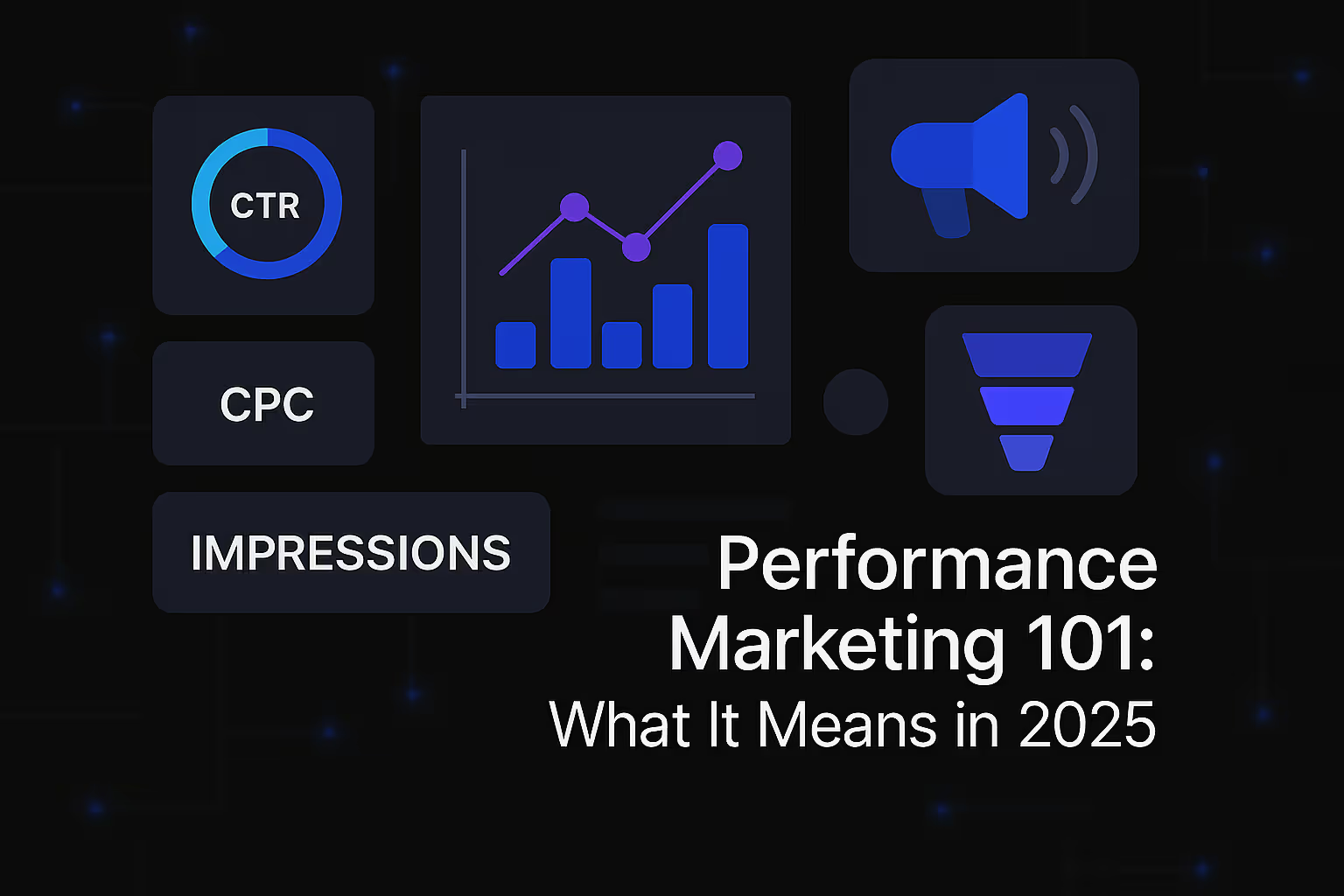Ad Creatives that Actually Convert: What You Need to Know

In the dynamic landscape of digital advertising, simply displaying an ad is no longer enough. The true measure of success lies not in impressions, but in conversions – the tangible actions users take that drive business objectives. While a myriad of factors influence campaign performance, the ad creative itself stands as the undeniable frontline, the immediate touchpoint that determines whether a potential customer pauses, engages, and ultimately, converts. Generic, uninspired creatives are akin to whispers in a crowded room; they are easily ignored. The challenge, and indeed the opportunity, lies in crafting ad creatives that cut through the noise, resonate deeply with the target audience, and compel them to act. This deep dive will explore the critical elements, strategic approaches, and advanced tactics necessary to transform your ad creatives from mere visibility tools into powerful conversion engines.
Understanding the Conversion Imperative
Beyond Impressions: Why Conversion is King
For too long, the digital advertising industry placed an inordinate focus on impressions and clicks as primary metrics. While these indicate reach and initial engagement, they often fail to capture the true return on investment. A million impressions are meaningless if they don't lead to sales, leads, or sign-ups. Conversion, in the context of ad creatives, refers to a desired action a user takes after interacting with your advertisement. This could be anything from making a purchase, filling out a form, downloading an ebook, subscribing to a newsletter, or even simply visiting a specific page on your website.
The shift in focus from mere exposure to concrete action represents a maturation of marketing strategy. It acknowledges that the ultimate goal of advertising is to generate business value. High-converting creatives are not just aesthetically pleasing; they are meticulously engineered to guide the user seamlessly from initial awareness to the desired outcome. They serve as the critical bridge between your brand and the customer’s intent, directly influencing your campaign’s return on ad spend (ROAS) and overall profitability. Understanding this fundamental imperative is the first step toward building ad campaigns that consistently deliver meaningful results. Without a clear conversion goal underpinning the creative process, even the most visually striking ads risk becoming expensive, yet ultimately unproductive, artistic endeavors.
The Foundational Pillars of High-Converting Ad Creatives
The creation of an ad that truly converts is not a matter of luck or fleeting inspiration; it is a meticulous process built upon several foundational pillars. These elements, when strategically combined, form a powerful persuasive narrative that resonates with the audience and drives action.
Knowing Your Audience: The Blueprint for Resonance
The most critical starting point for any high-converting ad creative is an exhaustive understanding of your target audience. Without this deep insight, your ad is merely a shot in the dark, likely to miss its mark. This goes far beyond basic demographics. True audience understanding delves into psychographics – their values, attitudes, interests, and lifestyles. What are their pain points? What problems are they trying to solve? What are their aspirations and desires? What motivates their decisions?
Creating detailed buyer personas is an invaluable exercise in this phase. These semi-fictional representations of your ideal customers help you empathize with their needs and envision how your product or service fits into their lives. Armed with this knowledge, you can tailor your messaging, visuals, and overall creative direction to speak directly to their specific circumstances and emotional triggers. An ad that truly resonates feels personal and relevant to the individual viewing it, establishing an immediate connection that sparks curiosity and encourages further engagement. This foundational step ensures that every subsequent creative decision is informed by genuine user intent and needs, moving away from generic marketing to highly targeted, impactful communication.
The Power of the Unique Selling Proposition (USP)
Once you understand your audience, the next crucial step is to clearly articulate what makes your offer not just good, but uniquely superior or different from the competition. This is your Unique Selling Proposition (USP), and it must be woven into the very fabric of your ad creative. Your USP isn't merely a list of features; it’s the core benefit or solution you provide that no one else can, or at least, not in the same compelling way. Why should a customer choose you over another option? What specific problem do you solve, or what unique value do you deliver?
High-converting creatives effectively communicate this distinction with clarity and conviction. The USP should be evident in both the visual elements and the accompanying copy. It’s about showcasing how your product or service addresses a specific pain point or fulfills a particular desire in a way that is compelling and memorable. Instead of simply listing features, focus on the transformative benefits. Does your product save time? Does it reduce stress? Does it provide a unique experience? By highlighting what makes you stand out, you give potential customers a clear reason to choose you, establishing value and differentiating your offer in a crowded marketplace. This focused differentiation is what converts casual viewers into committed customers.
Crafting Compelling Copy: The Art of Persuasion
Even the most stunning visuals can fall flat without compelling copy. Ad copy is the voice of your brand, the persuasive narrative that transforms interest into action. It’s an art form that demands precision, empathy, and a deep understanding of human psychology.
The headline is paramount; it is the hook that captures immediate attention and determines whether a user continues to read. It must be concise, intriguing, and benefit-driven, clearly signaling what the ad is about and why it matters to the viewer. Often, the headline poses a question, highlights a problem, or offers a bold solution.
The body copy then builds desire, addressing potential objections and elaborating on the benefits hinted at in the headline. This is where you connect emotionally with your audience, using storytelling, vivid language, and relatable scenarios. Focus on the "what's in it for me?" factor, articulating how your product or service will improve their lives or solve their problems. Use active voice and strong verbs. Clarity and conciseness are paramount; every word must earn its place. Avoid jargon and speak directly to your audience in their language. Incorporate elements of social proof, if applicable, to build trust.
Beyond general persuasion, effective ad copy leverages psychological triggers. The principle of scarcity (limited stock, limited-time offer) and urgency (act now, offer ends soon) can create a powerful impetus for immediate action. High-converting copy doesn't just inform; it inspires, it persuades, and it motivates, guiding the user towards the desired conversion. It’s a delicate balance of providing sufficient information without overwhelming the reader, all while maintaining a clear and compelling call to action.
Visuals That Speak Louder Than Words
In an increasingly visual world, the imagery or video used in your ad creative is often the first, and sometimes only, impression you make. High-quality visuals are not merely decorative; they are integral to conveying your message, evoking emotion, and building brand recognition. The right visual can instantly communicate value, set a tone, and create an emotional connection before a single word is read.
Crucially, visuals must be relevant to your offer and resonate with your target audience. They should directly support the message of your ad and ideally showcase your product or service in action, demonstrating its benefits rather than just presenting it statically. For example, if you're selling a productivity app, show someone effortlessly managing tasks with it, not just a screenshot of the interface. Emotional connection is key; visuals that evoke positive feelings like joy, relief, or aspiration are often highly effective.
Brand consistency is also vital. Your ad visuals should align with your overall brand guidelines, reinforcing recognition and trust. Consider the use of color psychology to influence perception and mood, and effective composition to draw the eye to key elements. For video ads, storytelling, pacing, and sound design play an equally crucial role in maintaining engagement and conveying the core message. Whether it's a stunning product shot, a relatable lifestyle image, or an engaging short video, the visual component of your ad creative must be thoughtfully chosen and meticulously crafted to capture attention and propel the viewer further down the conversion path. A compelling visual can instantly communicate what words often struggle to convey, making it an indispensable element of high-converting ad creatives.
The Irresistible Call to Action (CTA)
The Call to Action (CTA) is the ultimate directive within your ad creative, the final nudge that transforms interest into measurable action. It is perhaps the most critical component for conversion, as it explicitly tells the user what you want them to do next. A high-converting CTA is clear, prominent, and action-oriented.
Clarity is non-negotiable. Avoid vague language. Instead of "Click Here," opt for specific, benefit-driven phrases like "Shop Now & Save 20%," "Download Your Free Guide," "Get a Free Quote," or "Start Your Free Trial." The user should know exactly what will happen when they click. Prominence means the CTA must stand out visually, whether through a contrasting color, a distinct button, or strategic placement within the ad copy. It should be easily identifiable and not get lost amidst other elements.
The language used in your CTA can also subtly create urgency or highlight immediate benefit without being overly pushy. Phrases like "Limited Time Offer," "Enroll Today," or "Discover More" convey a sense of immediacy and value. Consider the emotional resonance; a CTA that promises a solution ("Solve Your Problem Now") can be more compelling than one that simply states an action ("Learn More"). While clarity is paramount, experimenting with different phrasing can yield significant improvements in conversion rates. The CTA is the gateway to conversion, and its optimization is a continuous process. A powerful ad creative builds desire, but it's the compelling CTA that ultimately closes the loop, guiding the user from passive viewing to active participation and, ultimately, to becoming a valuable customer.
Strategic Approaches to Ad Creative Development
Beyond the individual elements, the strategic framework within which ad creatives are developed and deployed profoundly impacts their conversion efficacy. This involves a continuous cycle of testing, adaptation, and a keen awareness of platform-specific nuances.
A/B Testing and Iteration: The Conversion Scientist's Lab
In the pursuit of high-converting ad creatives, reliance on guesswork is a recipe for mediocrity. The most successful advertisers approach creative development with a scientific mindset, embracing A/B testing and continuous iteration as indispensable practices. A/B testing involves creating two or more variations of an ad creative, changing only one element at a time (e.g., headline, image, CTA button color, body copy length), and then running them simultaneously to see which performs better against your conversion goal.
What elements should you test? Virtually everything is on the table: different headlines, alternative hero images or video clips, variations in the emotional appeal of your visuals, different calls to action, changes in copy length or tone, and even the offer itself. The key is to isolate variables to accurately pinpoint what drives performance. Setting up effective A/B tests requires careful planning: define your hypothesis (e.g., "A more direct CTA will lead to higher conversions"), ensure sufficient traffic for statistical significance, and run tests long enough to account for daily fluctuations.
Analyzing the results is equally crucial. It’s not just about identifying a winner, but understanding why it won. Did a certain visual resonate more deeply? Did a particular headline convey greater urgency? These insights inform future creative decisions, allowing you to build on successes and avoid repeating suboptimal approaches. The process is iterative: test, learn, refine, and re-test. This continuous cycle of experimentation and optimization is what allows advertisers to consistently improve their conversion rates, progressively moving closer to the ideal creative formula for their specific audience and offer. It transforms creative development from a static task into a dynamic, data-driven journey towards peak performance.
Understanding Ad Platforms and Their Nuances
The landscape of digital advertising is fragmented, with each major platform operating under its own set of rules, audience expectations, and technical specifications. A creative that performs exceptionally well on one platform might completely underperform on another if its nuances are ignored. Therefore, a strategic approach to ad creative development demands a deep understanding of these platform-specific characteristics.
Consider the stark differences between platforms. On Facebook and Instagram, visuals are king. High-quality images and short, engaging videos that fit seamlessly into a user's feed tend to perform best. Copy often needs to be concise initially, with the option to expand for those who click "See More." User-generated content and authentic, lifestyle-oriented visuals often outperform highly polished, overly commercial ones. In contrast, Google Search Ads are predominantly text-based, requiring extremely concise, keyword-rich headlines and descriptions that directly answer user intent. Google Display Network ads, while visual, often require different dimensions and a more direct, brand-centric approach.
LinkedIn demands a professional tone, focusing on business solutions, career growth, or industry insights, with visuals that reflect a corporate or educational environment. TikTok, on the other hand, thrives on raw, authentic, short-form video content that feels native to the platform, often leveraging trending sounds and challenges. For YouTube, long-form video ads can tell a more elaborate story, but initial hooks are critical to prevent skips. The ad format, copy length limits, audience mindset, and typical user behavior vary dramatically across these platforms. Effective ad creatives are not simply repurposed across channels; they are strategically adapted and optimized for the unique environment in which they will be displayed, ensuring they feel native and relevant to the platform's audience. This granular approach significantly enhances the likelihood of conversion.
The Role of Landing Pages in the Conversion Funnel
The most brilliant ad creative, masterfully designed to capture attention and drive clicks, can still fail if it leads to a poorly optimized landing page. The ad creative and the landing page are two halves of a single conversion equation; they must work in seamless harmony. The landing page is where the promise made in the ad creative is fulfilled, where the user’s journey culminates in the desired conversion.
Crucially, there must be message match between the ad creative and the landing page. If your ad promises a "50% off summer sale," the landing page must immediately confirm that offer and make it easy to access. Discrepancies create cognitive dissonance and lead to high bounce rates. The design, imagery, and language on the landing page should extend the narrative begun in the ad, providing a consistent and reassuring user experience.
Beyond consistency, the landing page itself must be optimized for conversion. This includes:
- Clarity: The offer, value proposition, and call to action should be immediately clear.
- Speed: Pages must load quickly, especially on mobile devices, to prevent user abandonment.
- Mobile Responsiveness: A significant portion of ad clicks come from mobile, so the page must be perfectly rendered and navigable on all devices.
- Reduced Friction: Minimize distractions, simplify forms, and make the conversion process as straightforward as possible. Every additional field or unnecessary click acts as a barrier.
- Social Proof: Testimonials, reviews, or trust badges can reinforce credibility.
The ad creative’s role is to generate qualified clicks, but the landing page’s role is to convert those clicks into customers. Therefore, an integrated strategy that optimizes both the creative and the post-click experience is essential for achieving high conversion rates and maximizing your advertising ROI.
Advanced Tactics for Maximizing Creative Performance
As the digital advertising ecosystem evolves, so too do the strategies for optimizing ad creative performance. Beyond the fundamentals, advanced tactics leverage data, authenticity, and psychological insights to create highly personalized and impactful campaigns.
Personalization and Dynamic Creatives
In an era of increasing audience segmentation, generic ads are rapidly losing their efficacy. Personalization is no longer a luxury but a necessity for maximizing conversion rates. This involves leveraging user data to tailor ad creatives to individual preferences, behaviors, and demographics. Imagine an ad for a travel destination that dynamically changes its imagery based on the user’s past search history for "beach vacations" versus "mountain retreats." This level of relevance significantly increases engagement.
Dynamic Creative Optimization (DCO) is the technological backbone of advanced personalization. DCO platforms automatically combine different elements of an ad (headlines, body copy, images, CTAs) in real-time, based on user data such as location, browsing history, time of day, or even weather. For example, an e-commerce brand could show a different product image in its ad to users who have previously viewed that specific product on their website. The benefits are substantial: increased relevance leading to higher click-through rates (CTRs) and conversion rates, reduced creative fatigue, and the ability to scale personalized campaigns without manual creation of countless ad variations. While implementing DCO requires robust data infrastructure and sophisticated tools, the incremental gains in conversion efficiency often far outweigh the initial investment, allowing advertisers to serve the right message to the right person at the right moment.
Harnessing User-Generated Content (UGC) and Social Proof
In a world saturated with branded messages, authenticity and trust have become paramount. This is where User-Generated Content (UGC) and social proof emerge as incredibly powerful assets for ad creatives. UGC refers to any form of content—images, videos, reviews, testimonials—created by customers rather than the brand itself. It’s inherently authentic, relatable, and often feels more trustworthy than professionally produced advertising. When potential customers see real people using and enjoying a product, it builds credibility in a way that traditional ads often cannot.
Integrating UGC into your ad creatives can take many forms: showcasing customer reviews within an image ad, featuring snippets of video testimonials, or running campaigns that encourage users to share their experiences. The power of social proof is deeply rooted in human psychology; we are more likely to trust and adopt behaviors that others around us have validated. This can manifest as displaying the number of satisfied customers, highlighting celebrity endorsements (if applicable), or showcasing a product’s high rating.
For ad creatives, this means strategically incorporating elements like:
- Customer testimonials: Direct quotes or video clips of satisfied customers.
- Product reviews and ratings: Displaying star ratings or positive review snippets.
- Influencer content: Authentic collaborations where influencers genuinely use and recommend the product.
- "As seen on" credibility: Highlighting media mentions or awards.
By leveraging the genuine experiences and endorsements of real people, ad creatives can bypass skepticism, build a strong foundation of trust, and significantly improve conversion rates. UGC and social proof transform passive viewing into active consideration, drawing on the collective wisdom of the crowd to persuade new customers.
Psychological Triggers in Ad Design
Effective ad creatives are not just about what you show or say, but how you tap into the underlying psychological mechanisms that drive human decision-making. Incorporating psychological triggers subtly and ethically can profoundly influence conversion rates. These triggers are universal principles that guide our choices, often subconsciously.
One powerful trigger is reciprocity, where people feel compelled to return a favor. An ad offering a free valuable resource (e.g., a detailed guide, a free trial) often triggers this, leading to higher sign-ups or engagement. Commitment and consistency suggest that once people commit to a small action (like clicking an ad or providing an email), they are more likely to follow through with larger actions.
Beyond social proof, which we discussed, authority plays a significant role. Featuring experts, industry leaders, or credible statistics in your ad can enhance trust and persuade action. The principle of liking suggests we are more likely to be persuaded by people we like or relate to; this is why using relatable models or a friendly, approachable brand voice can be effective. Finally, scarcity and urgency (as touched upon in copywriting) are potent motivators, leveraging the fear of missing out. "Only 5 left!" or "Offer ends tonight!" can create immediate impetus.
Integrating these triggers requires careful thought and a deep understanding of your audience. It's about subtle persuasion, not manipulation. For instance, rather than overtly stating "Buy now, limited stock," an ad might subtly convey scarcity through an image of rapidly dwindling inventory or a timer counting down. By understanding these deeply ingrained psychological principles, ad designers can craft creatives that speak not just to conscious thought, but also to the subconscious drivers of human behavior, leading to significantly higher conversion rates.
Measuring Success and Sustaining Growth
The journey of optimizing ad creatives for conversion is continuous. Once campaigns are live, the real work of measurement, analysis, and adaptation begins. Without robust tracking and a commitment to iterative improvement, even the most promising strategies will eventually stagnate.
Key Metrics Beyond Clicks
While clicks are an indicator of initial engagement, they are far from the ultimate measure of success for conversion-focused ad creatives. To truly understand performance, you must delve into metrics that directly correlate with your business objectives.
The most critical metric is the conversion rate, which tells you the percentage of users who completed your desired action after seeing or clicking your ad. This is the direct measure of your creative’s effectiveness in driving the intended outcome. Equally important is the cost per conversion (CPC), which reveals how much you are paying for each desired action. A low CPC indicates an efficient creative that is converting users cost-effectively.
For e-commerce businesses, return on ad spend (ROAS) is paramount. This metric calculates the revenue generated for every dollar spent on advertising, providing a clear picture of profitability. Understanding attribution models is also vital. Did the ad creative initiate the conversion, or was it one touchpoint among many? Different attribution models (first-click, last-click, linear, time decay) can provide different insights into the creative's role in the customer journey. Furthermore, considering the lifetime value of a customer (LTV) acquired through specific ad creatives can help you assess the long-term profitability of your creative strategies. By moving beyond superficial metrics and focusing on these conversion-centric indicators, advertisers can gain a comprehensive understanding of their ad creatives’ true impact on the bottom line. This allows for data-driven decisions that fuel sustained growth and optimize marketing budgets effectively.
Establishing a Creative Feedback Loop
High-converting ad creatives are not a one-time achievement but the result of an ongoing, systematic process of learning and adaptation. Establishing a robust creative feedback loop is essential for sustaining growth and preventing creative fatigue. This involves a continuous cycle of deploying new creatives, meticulously analyzing their performance, deriving actionable insights, and then applying those learnings to inform the next generation of creative development.
Regular performance reviews of your ad creatives are non-negotiable. Look beyond individual ad sets to identify broader trends. Which types of visuals consistently perform well for specific audience segments? What messaging resonates most strongly? Critically, learn from both successes and failures. A failed test is not a setback but an opportunity to understand what doesn't work, narrowing down the path to what does.
The digital landscape is constantly shifting, and audience preferences evolve. Your competitors are also optimizing, and new ad formats or platforms emerge. Therefore, your creative strategy must be agile and adaptive. Be prepared to pivot quickly based on performance data and market changes. Proactive monitoring helps identify creative fatigue – when an ad has been seen too many times by the same audience and its performance begins to decline. When this happens, it’s a clear signal to refresh your creatives with new variations, angles, or offers.
By cultivating this continuous feedback loop, where data informs creativity and creativity fuels further data collection, advertisers can build a resilient and highly effective ad creative strategy. This iterative approach ensures that your ads remain fresh, relevant, and consistently optimized to convert, driving sustainable success in the competitive world of digital advertising.
In conclusion, crafting ad creatives that actually convert is a multi-faceted discipline that transcends mere aesthetics. It demands a deep, empathic understanding of your audience, a clear articulation of your unique value, and the mastery of persuasive communication through both compelling copy and impactful visuals. Furthermore, it requires a commitment to scientific rigor through continuous A/B testing, a nuanced appreciation for platform-specific dynamics, and an unwavering focus on the entire conversion funnel, including the landing page experience. By integrating advanced tactics like personalization, leveraging the power of user-generated content, and subtly employing psychological triggers, advertisers can elevate their creatives to new heights of performance. Ultimately, success is measured not by fleeting impressions, but by tangible conversions, driven by an iterative process of data-informed decision-making and a relentless pursuit of creative excellence. Embrace this comprehensive approach, and your ad creatives will cease to be just ads; they will become powerful catalysts for business growth.
Similar Insights
Stay Updated with Our Insights
Join our newsletter for the latest trends and tips in web development and digital marketing.




